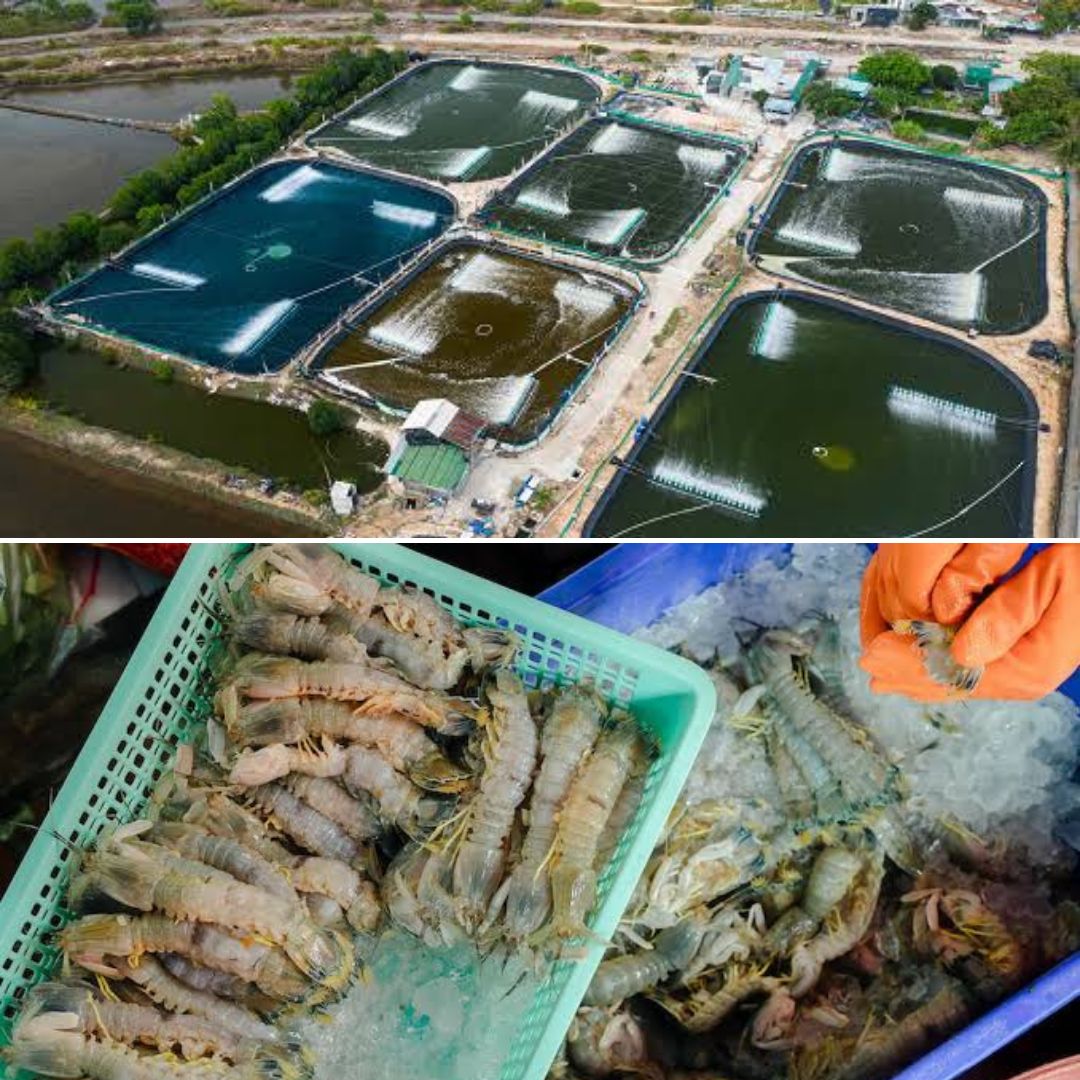From Green To Blue Revolution: Here's How Women Farmers In Haryana Transformed Saline Water Into A Cultivation Ground
Writer: Laxmi Mohan Kumar
She is an aspiring journalist in the process of learning and unlearning many things. Always up for discussions on everything from popular culture to politics.
Haryana, 31 Oct 2022 8:10 AM GMT
Editor : Snehadri Sarkar |
While he is a massive sports fanatic, his interest also lies in mainstream news and nitpicking trending and less talked about everyday issues.
Creatives : Laxmi Mohan Kumar
She is an aspiring journalist in the process of learning and unlearning many things. Always up for discussions on everything from popular culture to politics.
Saline water is considered unfavourable for agricultural production, but it is ideal for shrimp cultivation. Utilising this idea, here's how women farmers stepped into the blue revolution.
Women in Haryana have a lesson to give on finding opportunities even within the most adverse conditions. Hailing from a state that was once celebrated for its contributions to the green revolution, the growing expanse of saline water bodies was challenging to their agriculture line of profession. Many in the state viewed saline bodies as a threat, but the women in the villages decided to turn this narrative around.
Turning toward shrimp cultivation, which requires saline water bodies for their production, many families collaborated with the Government to make the switch. There were several government schemes available that promoted alternate or unconventional farming and utilising these rightly, they ventured into different waters that turned out profitable.
Success Story Of Sirsa District
Today in the Sirsa district alone, the space dedicated to shrimp farming goes up to nearly 5,000 acres. The majority of these spaces were initially taken care of by the women, and gradually as the business grew, their families began contributing towards it.
One such farmer from the Sirsa district is Veerpal Kaur, who began white shrimp farming on 2.5 acres of farm around the year 2016. Six years down the lane, her farming area has spread to cover 50 acres of land and the entire family is involved in the project.
An article by the Firstpost quoted her saying, "Generally, saline water is considered a curse for agriculture, but for shrimp production, it is proving to be a boon." Exploring this boon further, her family bought lands on lease.
Her husband Gurpreet Singh said the family has taken "seventeen acres of our farm is in Mithri village, Sirsa, ten acres are in village Chormar and 22 acres in Ahmedpur Darewala in Dabwali block of Sirsa district." Such has been the growth of the industry that they made the switch to.
Kaur's efforts were recognised by the government, which released a statement conveying that Kaur has paved the way for many other women to choose this line of business and has set an example of how adversities could be transformed into opportunities.
The statement added, "Like Veerpal Kaur, a beneficiary of Pradhan Mantri Matsya Sampada Yojana, six other women of the same village have also started the business of white shrimp production."
Turning Toward A Blue Revolution
Haryana was once famously known for its agricultural contributions, and with time it's now slowly switching to a form of blue revolution. The statement released in regard to the state's adoption of shrimp farming conveyed that Haryana is slowly building a success story by promoting the idea of blue revolution at the grassroots level.
The people have been forming workshops and cluster demonstrations to take the message of shrimp farming to many more farmers. White shrimp farming began in Haryana around the year 2014-15 under the Rashtriya Krishi Vikas Yojana (RKVY). After its success, it was picked up by districts of Karnal, Sonipat, Faridabad, Gurugram, Mewat, Palwal, Rohtak, Jind, Bhiwani, Hisar, Sirsa, Rewari, Jhajjar, Fatehabad, Charkhi Dadri, and so on.
Additional government support also exists in the form of a 60 per cent subsidy given to women belonging to scheduled castes and a 40 per cent subsidy given to the general category. Initially, when it was started, about one lakh metric tonnes of different fish were produced within a total farming area of 43,000 acres. The state government had then set a target of increasing production to over 2.10 lakh metric tonnes.
Talking about the growing demand amidst the growing goals set by the government, Gurpreet said, "buyers from Odisha, Telangana, West Bengal, and some other states come to Sirsa to buy white shrimp. Later, most of it is exported to countries like the US, Canada, Russia and other nations."
The demand for it continues to peak with slight variations in the prices every now and then, but it is still considered one of the growing markets on the local and global levels.
Also Read: India's Journey From A Famine-Ridden Country To Becoming Food Exporter
 All section
All section















